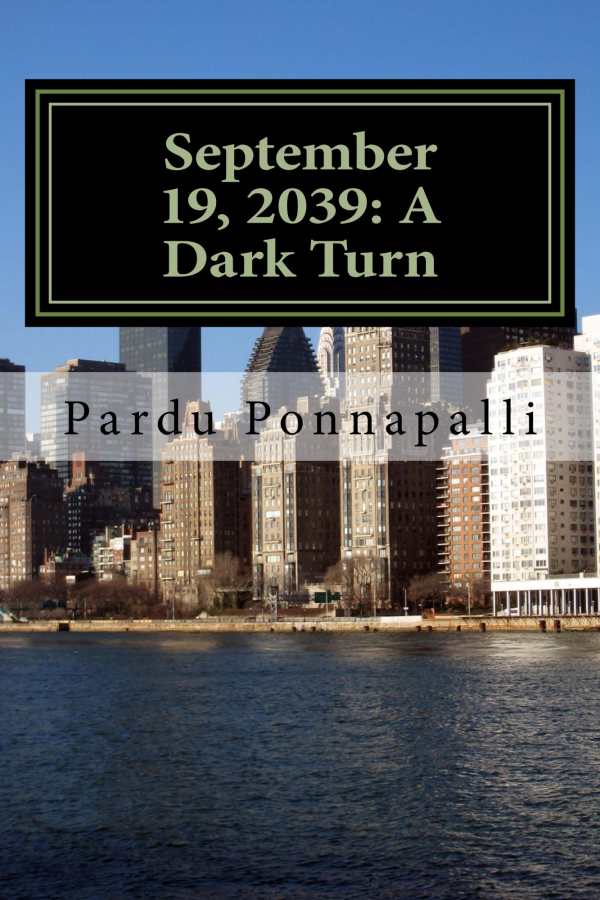
September 19, 2039: A Dark Turn
Embedded throughout this novel are questions of how the country uses technology while hanging on to its democratic ideals.
If the daily cable news is not scary enough, try the latest novel by Pardu Ponnapalli—September 19, 2039: A Dark Turn. The book is a gourmet mixture of one part spy thriller and one part political intrigue, with a healthy dose of science fiction. The completed stew makes for an unwinding and sometimes captivating narrative.
Although the initial action is set in 2039, just days after the worst terrorist attack on the United States, the aura of the narrative comes from contemporary news media. The bad actors are radical Muslims motivated by specific atrocities committed earlier against them. The terrorists strike at several places, using various devices ranging from drones to aerosol-dispersed biological agents and killing thousands of people. The president establishes martial law and begins an intense hunt for the perpetrators.
Ponnapalli has a unique writing style, creating a stage that’s stark, encapsulating, and, at times, bordering on the doubtful. The action is carried almost entirely by dialogue. The number of characters flowing in and out of the story is prolific, and sometimes their purpose in the story and their identities are confusing. Some anecdotal situations, too, are improbable, such as the director of homeland security mistakenly thinking that the capital of Ohio was Akron.
Additionally, there is nearly no descriptive detail provided for background or setting. The narrative also ricochets in time, from 2039 to 2001 to 1982, before settling in 2039. Most of the early chapters are short, written more like a script for a movie or television production. Only in the latter portion of the novel do the chapters lengthen, then begin to be numbered, unconventionally, like computer programs. Thus there is chapter 16, then 16.1 and 16.2. This style of numbering chapters supports the overall scientific flavor of the story.
The author does not dwell on the intimate interpersonal relationships of his characters. On those few occasions when the curtain is pulled back, the ensuing action is sparse, bordering on antiseptic, such as when the director of homeland security goes to bed with her top investigator: “After two more hours of conversation and another bottle of wine, Director Janice Hankins and Special Investigator Syd Ednogchi ended up in bed and spent a wonderful night together.” The essentials are provided and the rest is left to the imagination, much like an old-time radio drama show.
Embedded throughout this novel are serious ideas, including questions of how the country uses technology while hanging on to its democratic ideals. Those concepts make September 19, 2039 an entertaining and thought-provoking encounter.
Reviewed by
John Senger
Disclosure: This article is not an endorsement, but a review. The publisher of this book provided free copies of the book and paid a small fee to have their book reviewed by a professional reviewer. Foreword Reviews and Clarion Reviews make no guarantee that the publisher will receive a positive review. Foreword Magazine, Inc. is disclosing this in accordance with the Federal Trade Commission’s 16 CFR, Part 255.
